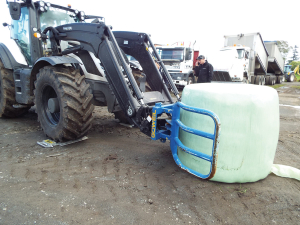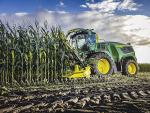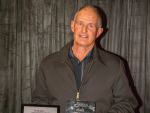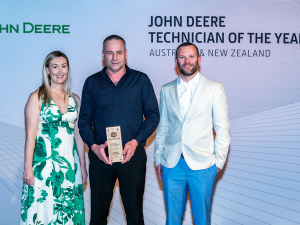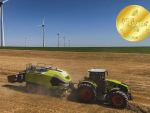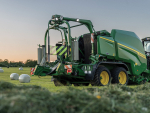Tractor tyre optimisation is designed to determine the right balance between inflation pressures and load.
This allows the operator to get the most out of their tyres, all the while increasing tractor productivity and output.
With new tyre and tractor technology, previous assumptions on tyre inflation pressures are often outdated. Not only does inflation determine the amount of load a tyre can carry. It also impacts ride comfort, fuel consumption, tyre life and overall tractor performance.
Adopting the right pressure will reduce running costs by up to 20%.
TRS Tyre & Wheel offer a tyre optimisation service for all tractors running on Trelleborg or Mitas tyres – via an on-site visit, that uses weigh cells to understand axle loadings and weight distribution. Then, post visit, it provides accurate data on optimal tyre pressure recommendations, footprint analysis and soil compaction advice.
A tyre optimisation report also indicates power to weight ratios and suggested operating pressures based on the data collected.
Rural News caught up with the test team recently at Jackson Contracting Limited, base at Tauhei, just north of Morrinsville in the Waikato.
Taking a closer look at a Valtra T175 fitted with a Quicke loader that had joined the fleet, weigh cells were place under each tyre and original tyre pressures recorded. Carrying a wrapped silage bale the results showed a front axle loading of 4824kg, the rear at 4119kg and tyre pressures of 19 and 15psi respectively.
Fitted with Trelleborg TM 800 Series 540-65R30 up front and 650-65R42 at the rear, the weight distribution ratio was 54:46 front to rear, with the tractor delivering a 51kg/hp output. Final recommendations for the tested configuration were to run at 20psi front and 14psi rear, increasing pressures by 0.2bar for extended roadwork.
Operations manager for JCL, Phil Ellison says modern radial tractor tyres have become increasing important as we strive to maintain traction with larger implements, while at the same time trying to reduce soil compaction.
“Of course, the latest technology costs a lot more than a set of old cross-ply’s, so we are very keen to make sure we get the best from a set of tyres in terms of overall life, fuel economy, operator comfort and improved agronomy,” he explains.
“Any savings we can make becomes very relevant as those savings are multiplied over a large fleet of prime movers we operate.”
www.trstyreandwheel.co.nz/optimisation

